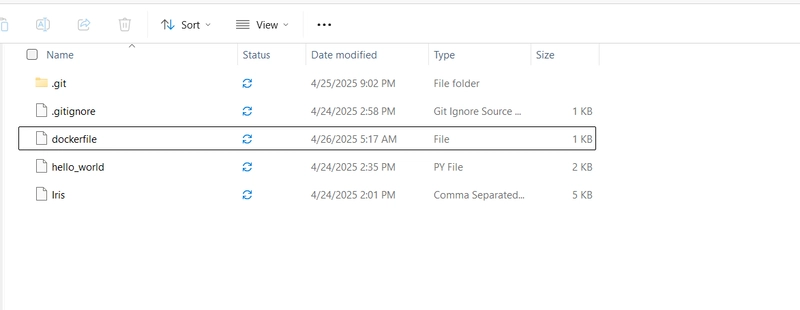Unlocking the Power of Async Programming in FastAPI (and Flask!)
Unlocking the Power of Async Programming As Python developers, we often face the challenge of handling concurrent requests efficiently. FastAPI, a modern web framework built on Python's async capabilities, is a great solution. It allows us to handle large numbers of requests simultaneously without blocking, improving performance and responsiveness. In this article, we’ll explore how to leverage async programming, covering key concepts and practical tips that will help you make the most of this powerful feature. We’ll also see how async programming is utilized in real-world projects like my job listing platform, JobFinders.site, which uses Flask with async support. What is Async Programming? Async programming allows us to run tasks concurrently rather than sequentially, making it possible to handle multiple tasks at once. In Python, async programming uses the async and await keywords to define asynchronous functions. These functions can pause execution while waiting for I/O-bound operations, such as database queries or API calls, to complete, without blocking the entire program. Why Async Programming in FastAPI (and Flask)? FastAPI is built with async in mind, and Flask can also support async operations with the help of extensions. By using async, you can: Handle a large number of concurrent requests: FastAPI can process multiple requests at the same time, making it perfect for I/O-bound operations like reading from a database or querying external APIs. Improve performance: Async operations allow your server to remain responsive, even when handling many requests at once. Reduce latency: Async programming minimizes the waiting time for tasks, allowing your API to respond faster. In my JobFinders.site project, Flask with async support has significantly improved performance, ensuring that hundreds of users can browse job listings and apply for positions simultaneously without delays. Setting Up Async in FastAPI and Flask To get started with async in FastAPI, we need to define async functions and use asynchronous libraries wherever applicable (e.g., for database access or API calls). In Flask, you can enable async by using libraries like gevent or eventlet. Here’s an example of an async route handler in FastAPI: from fastapi import FastAPI import asyncio app = FastAPI() # Simulate a long-running task async def long_task(): await asyncio.sleep(3) return "Task Completed" @app.get("/") async def root(): result = await long_task() return {"message": result} In Flask, you can achieve async behavior using asyncio or similar libraries: from flask import Flask import asyncio app = Flask(__name__) # Simulate a long-running task async def long_task(): await asyncio.sleep(3) return "Task Completed" @app.route('/') async def root(): result = await long_task() return {'message': result} if __name__ == '__main__': app.run(debug=True) Both examples achieve similar functionality: running an asynchronous task while keeping the server responsive. Database Access with Async FastAPI and Flask both support asynchronous database access. You can use async-compatible database libraries, such as databases or asyncpg for PostgreSQL. Here’s an example using SQLAlchemy with async support in FastAPI: from fastapi import FastAPI from sqlalchemy.ext.asyncio import AsyncSession, create_async_engine from sqlalchemy.orm import sessionmaker DATABASE_URL = "postgresql+asyncpg://user:password@localhost/dbname" engine = create_async_engine(DATABASE_URL, echo=True) async_session = sessionmaker( engine, class_=AsyncSession, expire_on_commit=False ) @app.get("/items") async def get_items(): async with async_session() as session: result = await session.execute("SELECT * FROM items") items = result.fetchall() return {"items": items} In Flask, you can use SQLAlchemy with async extensions like asyncpg or the databases library for asynchronous database operations. Handling Background Tasks FastAPI provides an easy way to handle background tasks, such as sending emails or processing large files, without blocking the main application thread. Flask also supports background tasks using packages like Celery or RQ. Here’s an example using FastAPI’s BackgroundTasks: from fastapi import FastAPI, BackgroundTasks app = FastAPI() def send_email(email: str): # Simulate email sending print(f"Email sent to {email}") @app.post("/send-email") async def send_email_task(background_tasks: BackgroundTasks, email: str): background_tasks.add_task(send_email, email) return {"message": "Email will be sent in the background"} In Flask, you can implement similar background task functionality using libraries like Celery: from flask import Flask from celery import Celery app = Flask(__name__) # Configure Celery celery = Celery(app.name, broker='redis://localhost:6379

Unlocking the Power of Async Programming
As Python developers, we often face the challenge of handling concurrent requests efficiently. FastAPI, a modern web framework built on Python's async capabilities, is a great solution. It allows us to handle large numbers of requests simultaneously without blocking, improving performance and responsiveness.
In this article, we’ll explore how to leverage async programming, covering key concepts and practical tips that will help you make the most of this powerful feature. We’ll also see how async programming is utilized in real-world projects like my job listing platform, JobFinders.site, which uses Flask with async support.
What is Async Programming?
Async programming allows us to run tasks concurrently rather than sequentially, making it possible to handle multiple tasks at once. In Python, async programming uses the async and await keywords to define asynchronous functions. These functions can pause execution while waiting for I/O-bound operations, such as database queries or API calls, to complete, without blocking the entire program.
Why Async Programming in FastAPI (and Flask)?
FastAPI is built with async in mind, and Flask can also support async operations with the help of extensions. By using async, you can:
- Handle a large number of concurrent requests: FastAPI can process multiple requests at the same time, making it perfect for I/O-bound operations like reading from a database or querying external APIs.
- Improve performance: Async operations allow your server to remain responsive, even when handling many requests at once.
- Reduce latency: Async programming minimizes the waiting time for tasks, allowing your API to respond faster.
In my JobFinders.site project, Flask with async support has significantly improved performance, ensuring that hundreds of users can browse job listings and apply for positions simultaneously without delays.
Setting Up Async in FastAPI and Flask
To get started with async in FastAPI, we need to define async functions and use asynchronous libraries wherever applicable (e.g., for database access or API calls). In Flask, you can enable async by using libraries like gevent or eventlet.
Here’s an example of an async route handler in FastAPI:
from fastapi import FastAPI
import asyncio
app = FastAPI()
# Simulate a long-running task
async def long_task():
await asyncio.sleep(3)
return "Task Completed"
@app.get("/")
async def root():
result = await long_task()
return {"message": result}
In Flask, you can achieve async behavior using asyncio or similar libraries:
from flask import Flask
import asyncio
app = Flask(__name__)
# Simulate a long-running task
async def long_task():
await asyncio.sleep(3)
return "Task Completed"
@app.route('/')
async def root():
result = await long_task()
return {'message': result}
if __name__ == '__main__':
app.run(debug=True)
Both examples achieve similar functionality: running an asynchronous task while keeping the server responsive.
Database Access with Async
FastAPI and Flask both support asynchronous database access. You can use async-compatible database libraries, such as databases or asyncpg for PostgreSQL.
Here’s an example using SQLAlchemy with async support in FastAPI:
from fastapi import FastAPI
from sqlalchemy.ext.asyncio import AsyncSession, create_async_engine
from sqlalchemy.orm import sessionmaker
DATABASE_URL = "postgresql+asyncpg://user:password@localhost/dbname"
engine = create_async_engine(DATABASE_URL, echo=True)
async_session = sessionmaker(
engine, class_=AsyncSession, expire_on_commit=False
)
@app.get("/items")
async def get_items():
async with async_session() as session:
result = await session.execute("SELECT * FROM items")
items = result.fetchall()
return {"items": items}
In Flask, you can use SQLAlchemy with async extensions like asyncpg or the databases library for asynchronous database operations.
Handling Background Tasks
FastAPI provides an easy way to handle background tasks, such as sending emails or processing large files, without blocking the main application thread. Flask also supports background tasks using packages like Celery or RQ.
Here’s an example using FastAPI’s BackgroundTasks:
from fastapi import FastAPI, BackgroundTasks
app = FastAPI()
def send_email(email: str):
# Simulate email sending
print(f"Email sent to {email}")
@app.post("/send-email")
async def send_email_task(background_tasks: BackgroundTasks, email: str):
background_tasks.add_task(send_email, email)
return {"message": "Email will be sent in the background"}
In Flask, you can implement similar background task functionality using libraries like Celery:
from flask import Flask
from celery import Celery
app = Flask(__name__)
# Configure Celery
celery = Celery(app.name, broker='redis://localhost:6379/0')
@celery.task
def send_email(email):
# Simulate email sending
print(f"Email sent to {email}")
@app.route("/send-email")
def send_email_task():
email = "example@example.com"
send_email.apply_async(args=[email])
return {"message": "Email will be sent in the background"}
if __name__ == '__main__':
app.run(debug=True)
Common Pitfalls in Async Programming
While async programming can greatly improve performance, it's important to avoid common pitfalls, such as:
-
Blocking the event loop: Avoid using synchronous functions (like
time.sleep) in async code, as they block the event loop and can degrade performance. - Unmanaged exceptions: Async functions should properly handle exceptions to prevent the server from crashing.
- Database connections: When using async with databases, make sure you're using an async-compatible library and managing connections efficiently.
How Async Powers Real-World Projects
In my projects, such as JobFinders.site (built with Flask + async) and Funeral Manager, async programming has allowed me to handle large amounts of traffic without sacrificing performance. These projects require processing large amounts of data quickly—whether it’s job listings or funeral service management—and async programming helps to ensure everything runs smoothly.
In particular, my job platform uses Flask with async support to process numerous concurrent users searching for job postings, applying for positions, and interacting with various services. Thanks to async capabilities, the application can handle this traffic while delivering real-time updates and interactions.
Conclusion
Async programming is a powerful tool for building high-performance applications, and both FastAPI and Flask support async operations. By using async functions and taking advantage of async capabilities, you can build fast, efficient APIs that handle many concurrent requests without blocking. With a little attention to best practices, you can optimize your applications for both speed and scalability.
Feel free to check out my projects, JobFinders.site and Funeral Manager, to see how async programming has been applied to real-world solutions.






























![[Free Webinar] Guide to Securing Your Entire Identity Lifecycle Against AI-Powered Threats](https://blogger.googleusercontent.com/img/b/R29vZ2xl/AVvXsEjqbZf4bsDp6ei3fmQ8swm7GB5XoRrhZSFE7ZNhRLFO49KlmdgpIDCZWMSv7rydpEShIrNb9crnH5p6mFZbURzO5HC9I4RlzJazBBw5aHOTmI38sqiZIWPldRqut4bTgegipjOk5VgktVOwCKF_ncLeBX-pMTO_GMVMfbzZbf8eAj21V04y_NiOaSApGkM/s1600/webinar-play.jpg?#)





































































































































![[The AI Show Episode 145]: OpenAI Releases o3 and o4-mini, AI Is Causing “Quiet Layoffs,” Executive Order on Youth AI Education & GPT-4o’s Controversial Update](https://www.marketingaiinstitute.com/hubfs/ep%20145%20cover.png)














































































































































































































































































































































































![Google Home app fixes bug that repeatedly asked to ‘Set up Nest Cam features’ for Nest Hub Max [U]](https://i0.wp.com/9to5google.com/wp-content/uploads/sites/4/2022/08/youtube-premium-music-nest-hub-max.jpg?resize=1200%2C628&quality=82&strip=all&ssl=1)

























































![Epic Games Wins Major Victory as Apple is Ordered to Comply With App Store Anti-Steering Injunction [Updated]](https://images.macrumors.com/t/Z4nU2dRocDnr4NPvf-sGNedmPGA=/2250x/article-new/2022/01/iOS-App-Store-General-Feature-JoeBlue.jpg)



























































